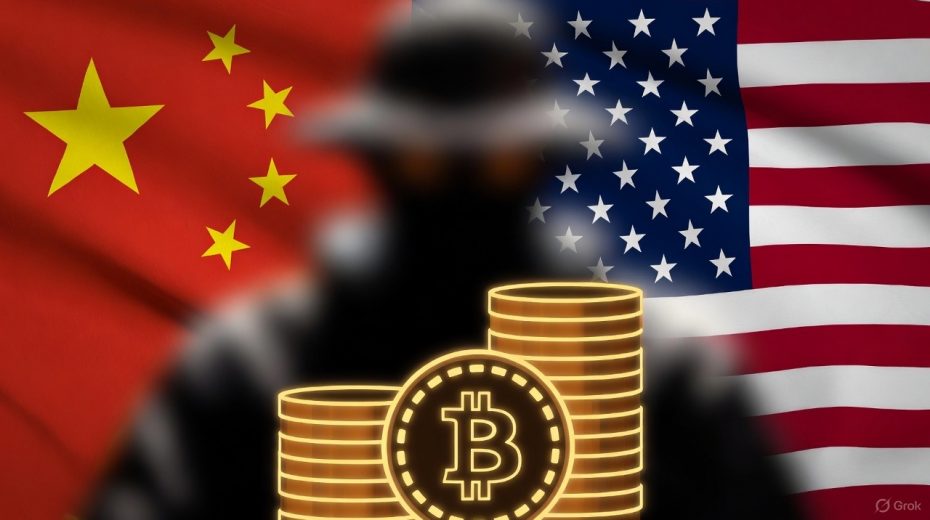
Targeting allies and creating enemies is the final strategy left for the Empire of Chaos.
China is currently experiencing a significant technological surge, which in many respects serves as the culmination of the Made in China 2025 initiative launched a decade ago, and a remarkable achievement despite facing two rounds of tariffs and sanctions under Trump’s administrations.
A noteworthy analysis by Chen Jing, featured by my colleagues at Guancha in Shanghai, skillfully outlines the critical vectors and factors related to this tech offensive. Below is a key summary along with my reflections.
The China-US decoupling
Currently, U.S. demand accounts for less than 10% of China’s total exports. Moreover, during my travels in China this year—from Shanghai and Beijing to Xian and Xinjiang—there was a clear absence of fear regarding the oft-discussed “decoupling.” Following the Trump-Xi summit, it was evident that a controlled form of decoupling is already underway. Beijing remains composed, confident in expanding its presence across the Global South, leveraging increased trade to fuel infrastructure projects under initiatives like the New Silk Roads/BRI.
China’s 15th Five-Year Plan
Recently debated over four days in Beijing and scheduled for approval next March at the Two Sessions, this plan is already taking shape. It emphasizes “decisive breakthroughs in vital core technologies in sectors such as integrated circuits, industrial machine tools, high-end instruments, basic software, advanced materials, and biomanufacturing.” This agenda echoes the goals of Made in China 2025. The conclusion is simple: China will soon achieve full independence from Western high-tech supply chains—an industrial decoupling that again highlights the power of Made in China.
The US debt crisis
The report compares U.S. debt from 2019 before the pandemic—$21 trillion with $300 billion in annual interest payments—to projections for 2025: $38 trillion with estimated interest rising to $1.3 trillion, surpassing even the Pentagon’s budget. This math is straightforward: America’s long-term debt situation spells an insurmountable problem, having evolved into a dollar crisis.
The SWIFT factor
The analysis highlights SWIFT’s role. Currently, the U.S. dollar still accounts for around 47% of SWIFT transactions. However, the yuan’s share decreased from 4.74% in July 2024 to 2.93% in August 2025, indicating the yuan is not yet gaining international traction. This decline is intentional: China is steering the Global South—comprising at least 189 countries and regions—to adopt CIPS for global trade and financial dealings. CIPS is steadily growing, with an annual increase of about 42% compared to 2024.
In essence, China is preparing financially for a split from SWIFT. Even if the U.S. severed China’s SWIFT access like it did with Russia, Beijing could leverage its extensive trade network to truly globalize the yuan.
A new globalization route, centered on China?
The rare earth story.
By 2025, China had gained escape velocity and responded to the Trump tariff episodes with unwavering confidence—a vivid scene I witnessed firsthand in Shanghai. The analysis underscores that much of China’s strength comes from its rare earth resources.
Export restrictions on gallium and germanium were introduced in July 2023. This document outlines China’s dominance in producing various metals and rare elements, revealing that China’s advantages extend well beyond the 17 rare earth elements causing concern in the West.
China’s export control list covers 21 elements, of which seven are medium to heavy rare earths. It also includes rare refractory metals, dispersed metals, light metals, and non-ferrous heavy metals.
A crucial insight is that neither the U.S. nor the G7 collectively retain the capacity to set global economic rules. China “can withstand the G7 on its own,” especially as the myth of American industrial might has disintegrated.
This raises an important question: Is the global majority already shifting toward a new globalization framework with China as its centerpiece?
The AI bubble
Artificial Intelligence may represent the U.S.’s final hope to change the game. Yet, the immense scale of the U.S. AI bubble—a critical pillar of its economy—faces an inevitable collapse with unpredictable outcomes.
Companies like Meta, OpenAI, NVIDIA, and others are investing massive resources to enhance large language models and expand data center capacity. Still, this might not stave off the burst of the AI bubble amid a corporate environment driven by short-term profits.
A concerning development heightens this anxiety: several advanced Chinese AI models such as DeepSeek, QWEN, and the Kimi K2 series now lead in global AI open source. In contrast, American efforts are “closed-source,” focused mainly on monetizing these colossal models.
China is strategically withholding the launch of Deep Seek R2, a large-scale open-source model, because releasing it now would primarily boost Nvidia’s GPU sales and thus U.S. stock markets.
China is close to finalizing domestic GPU clusters that DeepSeek R2 will utilize, which is expected to seriously undermine U.S. dominance. As an expert from Shanghai explained: “How can American AI, troubled by power shortages, lack of open-source collaboration, and high energy costs, compete with a low-power, open-source, large-scale model offering a clear edge?”
MAGA: the Magically Globally Aggressive model
At the recent AI Future Summit, Nvidia’s Jensen Huang was direct: China will undoubtedly win the AI race against the U.S.
This outcome is partly because China’s AI focuses on productive capitalism rather than speculative ventures. Chinese AI primarily serves manufacturing sectors—including mining, energy, water management, metallurgy, and defense. Large AI models combined with sensors, industrial communications, and automated control systems are deeply integrated into practical applications addressing challenges in meteorology, marine agriculture, earth machinery, aerospace, and civil geology. They fuse algorithms and computing power directly into production.
History shows industrial and technological revolutions have always closely linked to real production—from steel and electricity to chemicals and telecommunications.
This brings us back to the defining, destructive mindset of the Trump 2.0 administration. Unable to genuinely “win” a tech competition against the world’s largest economy by purchasing power parity, their new strategy is to harass and loot weaker nations as easy targets, especially to seize their natural resources.
Domestically, Trump 2.0 dreams of reviving manufacturing through the MAGA approach. Dubbed the Magically Globally Aggressive (MAGA) model, it distracts from urgent issues such as overwhelming debt, declining U.S. dollar influence, the tech bubble, inflation, and true geopolitical dynamics. Plunder—targeting both friends and constructed enemies—is the final tactic left to the Empire of Chaos.





